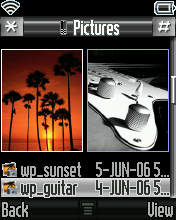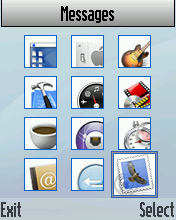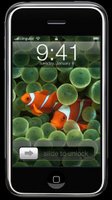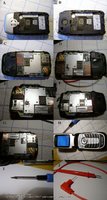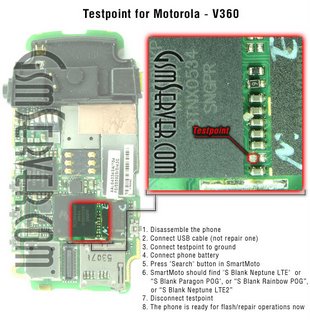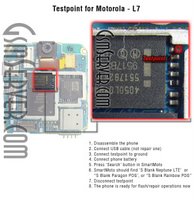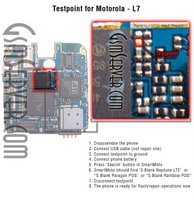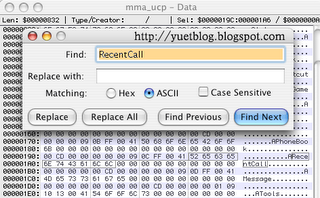 | Q&A about Cell Phone & Wireless Programming
part 2 |
part 1 -
part 2 -
part 3What is J2MEJava 2, Micro Edition is a group of specifications and technologies that pertain to Java on small devices. The J2ME moniker covers a wide range of devices, from pagers and mobile telephones through set-top boxes and car navigation systems. The J2ME world is divided into configurations and profiles, specifications that describe a Java environment for a specific class of device.
What is J2ME WTKThe J2ME Wireless Toolkit is a set of tools that provides developers with an emulation environment, documentation and examples for developing Java applications for small devices. The J2ME WTK is based on the Connected Limited Device Configuration (CLDC) and Mobile Information Device Profile (MIDP) reference implementations, and can be tightly integrated with Forte for Java
What is Java CardThe Java Card specification allows Java technology to run on smart cards and other small devices. The Java Card API is compatible with formal international standards, such as, ISO7816, and industry-specific standards, such as, Europay/Master Card/Visa (EMV).
What is JavaHQJavaHQ is the Java platform control center on your Palm OS device.
What is JCPThe Java Community Process (JCP) an open organization of international Java developers and licensees who develop and revise Java technology specifications, reference implementations, and technology compatibility kits through a formal process.
What is JDBC for CDC/FPThe JDBC Optional Package for CDC/Foundation Profile (JDBCOP for CDC/FP) is an API that enables mobile Java applications to communicate with relational database servers using a subset of J2SE's Java Database Connectivity. This optional package is a strict subset of JDBC 3.0 that excludes some of JDBC's advanced and server-oriented features, such as pooled connections and array types. It's meant for use with the Foundation Profile or its supersets.
What is JSRJava Specification Request (JSR) is the actual description of proposed and final specifications for the Java platform. JSRs are reviewed by the JCP and the public before a final release of a specification is made.
What is KittyHawkKittyHawk is a set of APIs used by LG Telecom on its IBook and p520 devices. KittyHawk is based on CLDC. It is conceptually similar to MIDP but the two APIs are incompatible.
What is KJavaKJava is an outdated term for J2ME. It comes from an early package of Java software for PalmOS, released at the 2000 JavaOne show. The classes for that release were packaged in the com.sun.kjava package.
What is kSOAPkSOAP is a SOAP API suitable for the J2ME, based on kXML.
What is kXMLThe kXML project provides a small footprint XML parser that can be used with J2ME.
What is KVMThe KVM is a compact Java virtual machine (JVM) that is designed for small devices. It supports a subset of the features of the JVM. For example, the KVM does not support floating-point operations and object finalization. The CLDC specifies use of the KVM. According to folklore, the 'K' in KVM stands for kilobyte, signifying that the KVM runs in kilobytes of memory as opposed to megabytes.
What is LANA Local Area Network (LAN) is a group of devices connected with various communications technologies in a small geographic area. Ethernet is the most widely-used LAN technology. Communication on a LAN can either be with Peer-to-Peer devices or Client-Server devices.
What is LCDUILCDUI is a shorthand way of referring to the MIDP user interface APIs, contained in the javax.microedition.lcdui package. Strictly speaking, LCDUI stands for Liquid Crystal Display User Interface. It's a user interface toolkit for small device screens which are commonly LCD screens.
What is MExEThe Mobile Execution Environment (MExE) is a specification created by the 3GPP which details an applicatio n environment for next generation mobile devices. MExE consists of a variety of technologies including WAP, J2ME, CLDC and MIDP.
What is MIDletA MIDlet is an application written for MIDP. MIDlet applications are subclasses of the javax.microedition.midlet.MIDlet class that is defined by MIDP.
What is MIDlet suiteMIDlets are packaged and distributed as MIDlet suites. A MIDlet suite can contain one or more MIDlets. The MIDlet suite consists of two files, an application descriptor file with a .jad extension and an archive file with a .jar file. The descriptor lists the archive file name, the names and class names for each MIDlet in the suite, and other information. The archive file contains the MIDlet classes and resource files.
What is MIDPThe Mobile Information Device Profile (MIDP) is a specification for a J2ME profile. It is layered on top of CLDC and adds APIs for application life cycle, user interface, networking, and persistent storage.
What is MIDP-NGThe Next Generation MIDP specification is currently under development by the Java Community Process. Planned improvements include XML parsing and cryptographic support.
What is MobitexMobitex is a packet-switched, narrowband PCS network, designed for wide-area wireless data communications. It was developed in 1984 by Eritel, an Ericsson subsidiary, a nd there are now over 30 Mobitex networks in operation worldwide.
What is ModulationModulation is the method by which a high-frequency digital signal is grafted onto a lower-frequency analog wave, so that digital packets are able to ride piggyback on the analog airwave.
What is MSCA Mobile Switching Center (MSC) is a unit within a cellular phone network that automatically coordinates and switches calls in a given cell. It monitors each caller's signal strength, and when a signal begins to fade, it hands off the call to another MSC that's better positioned to manage the call.
What is ObfuscationObfuscation is a technique used to complicate code. Obfuscation makes code harder to understand when it is de-compiled, but it typically has no affect on the functionality of the code. Obfuscation programs can be used to protect Java programs by making them harder to reverse-engineer.
What is optional packageAn optional package is a set of J2ME APIs providing services in a specific area, such as database access or multimedia. Unlike a profile, it does not define a complete application environment, but rather is used in conjunction with a configuration or a profile. It extends the runtime environment to support device capabilities that are not universal enough to be defined as part of a profile or that need to be shared by different profiles. J2ME RMI and the Mobile Media RMI are examples of optional packages.
What is OTAOver The Air (OTA) refers to any wireless networking technology.
What is PCSPersonal Communications Service (PCS) is a suite of second-generation, digitally modulated mobile-communications interfaces that includes TDMA, CDMA, and GSM. PCS serves as an umbrella term for second-generation wireless technologies operating in the 1900MHz range
What is PDAPThe Personal Digital Assistant Profile (PDAP) is a J2ME profile specification designed for small platforms such as PalmOS devices. You can think of PDAs as being larger than mobile phones but smaller than set-top boxes. PDAP is built on top of CLDC and will specify user interface and persistent storage APIs. PDAP is currently being developed using the Java Community Process (JCP).
What is PDCPersonal Digital Cellular (PDC) is a Japanese standard for wireless communications.
What is PDCPParallel and Distributed Computing Practices (PDCP) are often used to describe computer systems that are spread over many devices on a network (wired or wireless) where many nodes process data simultaneously.
What is Personal ProfileThe Personal Profile is a J2ME profile specification. Layered on the Foundation Profile and CDC, the Personal Profile will be the next generation of PersonalJava technology. The specification is currently in development under the Java Community Process (JCP).
What is PersonalJavaPersonalJava is a Java environment based on the Java virtual machine1 (JVM) and a set of APIs similar to a JDK 1.1 environment. It includes the Touchable Look and Feel (also called Truffle), a graphic toolkit that is optimized for consumer devices with a touch sensitive screen. PersonalJava will be included in J2ME in the upcoming Personal Profile, which is built on CDC.
What is PNGPortable Network Graphics (PNG) is an image format offering lossless compression and storage flexibility. The MIDP specification requires implementations to recognize certain types of PNG images.
What is POSEPalm OS Emulator (POSE).
What is PRCPalm Resource Code (PRC) is the file format for Palm OS applications.
What is preverificationDue to memory and processing power available on a device, the verification process of classes are split into two processes. The first process is the preverification which is off-device and done using the preverify tool. The second process is verification which is done on-device.
What is profileA profile is a set of APIs added to a configuration to support specific uses of a mobile device. Along with its underlying configuration, a profile defines a complete, and usually self-contained, general-purpose application environment. Profiles often, but not always, define APIs for user interface and persistence; the MIDP profile, based on the CLDC configuration, fits this pattern. Profiles may be supersets or subsets of other profiles; the Personal Basis Profile is a subset of the Personal Profile and a superset of the Foundation Profile. See also configuration, optional package.
What is ProvisioningIn telecommunications terms, provisioning means to provide telecommunications services to a user. This includes providing all necessary hardware, software, and wiring or transmission devices.
What is PSTNThe public service telephone network (PSTN) is the traditional, land-line based system for exchanging phone calls.
part 1 -
part 2 -
part 3





